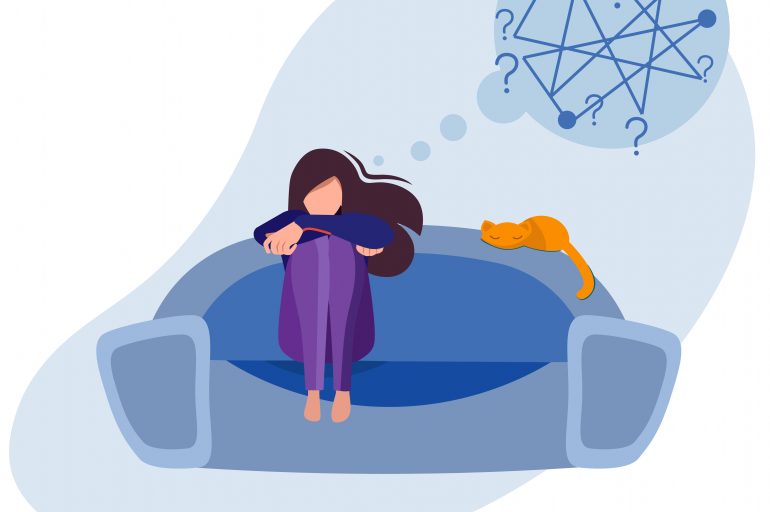
Thoughts about anxiety are rooted in assuming something dangerous, or a worst case scenario, is definitely going to happen.
Often, we are not even aware of what this absolute, worst case scenario is! This worst case scenario can be tricky to identify because the thoughts typically exist in our subconscious. The subconscious is just beneath the surface of awareness, ready to be accessed, but it requires you to ask yourself “Why am I feeling this way?” or “What is so bad about that?”
For example, a person could have anxiety about meeting new people at a job fair. On the surface, the anxiety thought is “Other people will see that I’m nervous.” But if we were to ask “What’s so bad about other people seeing you are nervous?” the subconscious, worst case scenario assumption is others will think they are weak, weird, odd, off in some way, bad, worthless, etc… We then have anxiety, without realizing it (it’s subconscious!) because we are agreeing with and assuming these worst case scenarios are true!
Further, when you have anxiety, these worst case assumptions are humming along, playing like a record in your mind, on a consistent basis. The frequency of these assumptions further reinforces the likelihood you will think the same way every time during these anxiety filled moments.
In short, anxiety thoughts are about worst case scenario assumptions that exists just beneath our awareness, and happen on a consistent basis.
Typical anxiety thoughts include:
Panic: My heart is beating too fast!
Worst Case Assumption: I’m going to die
General: What if I can’t complete the project in time! What if I arrive late! What if…
Worst Case Assumption: I’ll be fired and never get a job again
Social: They’re going to think I’m weird.
Worst Case Assumption: I’m going to be alone forever
Obsessive: Did I check the alarm on my phone to wake me up? I’ll check again.
Worst Case Assumption: I’m a bad person if I forget to do something

There any many Cognitive Behavioral Therapy skills to challenge anxiety thoughts. However, the common theme with these skills is the ability to increase your awareness and identify the subconscious, worst case scenario.
Awareness is a powerful tool. One way to develop this tool is to use something called the downward arrow technique. The approach is fairly straightforward. When you are having anxiety, ask yourself the question “what is so bad about that.” Often you have to ask this question multiples times in one sitting. This approach will often lead you the subconscious thought that is the core of your anxiety in the moment.
Once you are aware of the worst case scenario thought, do your best to consider what other outcomes might also happen. The goal isn’t to stop the anxiety thought, make it go away, or to challenge it. The goal is to get your mind to consider other possibilities, instead of assuming that the only outcome is the worst case scenario.
When your mind gets in the habit of considering other possibilities, other than a worst case scenario, then the anxiety thoughts become less intense and less frequent over time.